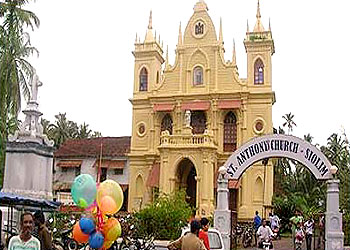 The Royal Chapel of St. Anthony was constructed in 17th century. The church is located in Panjim, the capital city of Goa which was dedicated to St. Anthony. St. Anthony is the national Portuguese saint. He is an honoured person and even the Portuguese people held him in high esteem and worshipped him in this church. The construction of the church was discontinued in 1835 but in 1894 the renovation process was started by the last Governor General of Goa, Vassalo de Silva. It was finally re- inaugurated in 1961.
The Royal Chapel of St. Anthony was constructed in 17th century. The church is located in Panjim, the capital city of Goa which was dedicated to St. Anthony. St. Anthony is the national Portuguese saint. He is an honoured person and even the Portuguese people held him in high esteem and worshipped him in this church. The construction of the church was discontinued in 1835 but in 1894 the renovation process was started by the last Governor General of Goa, Vassalo de Silva. It was finally re- inaugurated in 1961.
Every year on the Saint`s feat day a procession is organized where the statue of St Anthony is opened for the masses. The church attracts devotees from all over the world at the time of the feast of St Anthony.
Situated towards the west side of the tower of St. Augustine, Chapel of St. Anthony has not been only a place of worship but also a place to witness the confluence of Portuguese and Indian culture which has been magnificently portrayed in its architecture. It is a semicircular shaped small chapel. The entrance of the church has a semi circular arch and twisted pilasters.
The church has paintings of four frescoes and also has pictures of five doctors of the chapel. The church has a big altar where people light candles and pray to the god. The interior decoration of this church is splendid with the clerestory windows and rich ornamentation.
This article is a stub. You can enrich by adding more information to it. Send your Write Up to content@indianetzone.com





















